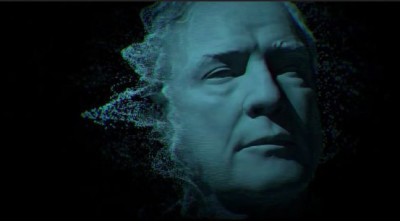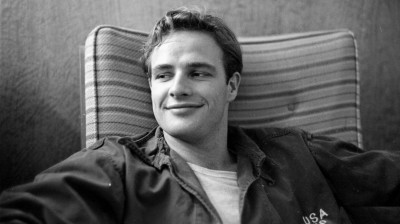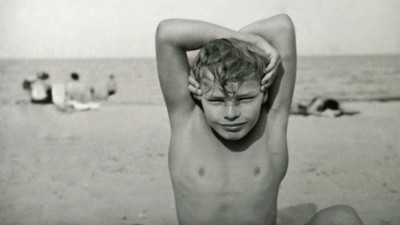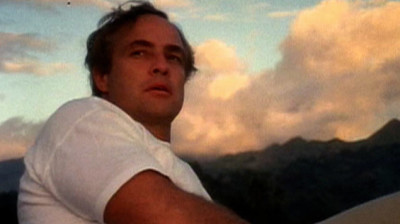In addition to being one of the greatest, if not the greatest actor of the 20th Century, Marlon Brando was one of the most enigmatic individuals of our time. He was also one of the most private. As the 10th anniversary of his death approached, the Brando Estate wanted to do something special to commemorate Marlon Brando and keep his legacy alive. Cataloguing and archiving of Brando’s personal possessions which had been in storage for a decade began and an idea of a documentary began to take shape. Enter writer/director/editor/documentarian Stevan Riley.
While Riley went into research mode to develop a “pitch” for the documentary, the archivists uncovered a treasure trove of riches. While Riley was aware there were a few audiotapes made by Brando, what he didn’t realize, what no one realized, was that there were over 300 hours of audiotapes made by Brando himself. Riley’s documentary emerged – a film told in Brando’s own voice, own words. Brando would, in essence, come back from the grave.
As Riley related to me, one of the first tapes he listed to “was a self-hypnosis tape. Quite by accident. It was unbelievable. When I listened to it, I thought, ‘Oh my God. This is beyond private.’ and it felt a bit strange listening to it because I felt like I was really intruding. . .I tried to treat it with as much sensitivity as possible, but it was interesting just to hear his own dialogue with himself. He talked about trust a lot – ‘You can trust me. This is a voice you can trust. I have your interests at heart.’ It was almost like he just felt that no one else had his interests at heart and he could trust himself.” And it is from Brando’s own lips during one of these self-hypnosis sessions that the very title of this documentary comes – “Listen to Me Marlon.”
As he listened to more tapes, Riley’s vision began to deepen and take on more definition and texture. “It was almost like [Brando] just felt that no one else had his interests at heart and he could trust himself. [The tapes] suggested all of that. I was very curious. I wondered what was going on under the surface and had this idea. . . I planned a lot of things with the story in advance that it would be a psychoanalysis of Brando. It would be looking back on the tragedy in the household. There would be an investigation of that. There would be a Freudian study. I knew Marlon was obsessed by solving the problems of his youth. ”
A believer in self-hypnosis, many of the recordings are of Brando’s sessions with himself while others, thoughts, ruminations. Kinescopes, found-footage and behind-the-scenes photos and film clips, promotional materials, were all meticulously saved. Photos of his youth and that of happy days with his young children and his once beloved Tahiti were discovered. It was clear that Brando did intend, as we hear many times throughout the film, to create his autobiography both in print and in film. Riley weaves all into a compelling narrative that is also punctuated with clips of Brando’s most famous, and not so famous, films as well as news reports of the tragedies that befell him in the 90’s.
We hear first-hand Brando’s admissions of fault, of bad decisions, of his reverence for the craft and art of acting but his disdain for the greed and business aspect of it. We even hear him speak of his reasons for taking certain jobs later in life – he needed a paycheck. We hear and feel the complexity of a tortured soul, his preoccupation with good and evil and the pain over his own childhood and that of his children. He bares his insecurities and fears. We also hear his compassion for others and for civil rights. And hearing Brando speak, we understand. It is a cruel irony that all the things that fascinated him would then afflict him.
But we also see Brando. Thanks to his own prescience, in the 1980’s he hired VFX wizard Scott Billups to computerize his face and head believing that, “One day an actor will just be put into the computer screen.” Although created on a now outdated program called Cyberware, Passion Pictures (production company of “Listen to Me Marlon”) was able to crack the coding and then working again with Billups and others, do a 3D version of Brando’s face and head adding in motion capture for facial movement so it appears as if Brando – in a haunting white digitized format – is speaking the very words we are hearing. Brilliant design on the part of Riley.
Adding even more depth and texture to the unfolding tapestry, Riley reconstructed Brando’s Mulholland Drive home (now razed) on a London sound stage, complete with the decor and items from Brando’s storage. With a fluidity of camera traversing through the house as we hear Brando speak, the result is both haunting and ethereal. Riley, who also edits the film, does a superb job with the visual elements in corresponding imagery with the audiotapes. The film also has a flow and pacing that matches the cadence of Brando’s speech pattern, completing the immersion.
Marlon Brando once made a statement that he would “not invite the American public into my soul.” He does just that now with his performances on screen and with the audiotapes we are now privy to hear. A documentary as masterful and complex as Brando himself, “Listen to Me Marlon” is the ultimate Brando on Brando.
Directed by Stevan Riley
Written by Stevan Riley and Peter Ettedgui




















